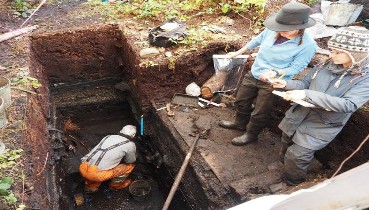
Meet The Incredible White-Winged Fairywren Bird
Feeding
The White-winged Fairy-wren (Dirk Hartog Island) feeds on insects and some seeds (Carter 1917; Johnstone & Storr 2004). Based on studies of the mainland subspecies M. l. leuconotus, it might also take other invertebrates (such as spiders or slaters) and some fruit (Jackson 1919; Lea & Gray 1935; Tidemann 1983).
There is little published information on the foraging behavior of the White-winged Fairy-wren (Dirk Hartog Island). It is said to sally for flying insects (Carter 1917) and, based on studies of the mainland subspecies M. l. leuconotus and the Barrow Island subspecies M. l. edouardi, it probably also forages on the ground and in shrubs and trees, by hopping and plucking (or gleaning) food items (Rowley & Russell 1997; Tidemann 1983; Wooller & Calver 1981).
Movement Patterns
The White-winged Fairy-wren (Dirk Hartog Island) is sedentary (Pizzey 1980) or, based on observations of the mainland subspecies M. l. leuconotus and the Barrow Island subspecies M. l. edouardi, resident on Dirk Hartog Island (Morris et al. 1981; Rowley & Russell 1997; Saunders & Ingram 1995; Sedgwick 1978). It is possible that there might be some rare movement to the adjacent mainland: black-plumaged birds, presumably originating from Dirk Hartog Island, have been reported on the Peron Peninsula (Driskell et al. 2002; Pizzey 1980; Schodde & Mason 1999). However, due to a lack of corroborative material, these records cannot be confirmed (Schodde & Mason 1999).
Little information is available on the dispersal of the young. In one study, only seven of 66 nestlings banded were recaptured in the following year, and all of these birds (six males and one female) were recaptured in close proximity to their natal sites. Five of the six males that were banded became helpers, and four of these males assisted at the nest of their social father (Rathburn & Montgomerie 2003).
No information is available on the home range of the White-winged Fairy-wren (Dirk Hartog Island). However, males in breeding plumage maintain large territories during the breeding season. The territories are occupied by the breeding pair and (where present) a brown-plumaged male helper (Rathburn & Mongomerie 2003). The size of the territories has not been recorded but, based on observations of the mainland subspecies M. l. leuconotus, they probably range from about 1.5 to 6 ha in the area (Higgins et al. 2001; Rowley & Russell 1995; Tidemann 1980, 1990).
The White-winged Fairy-wren (Dirk Hartog Island) feeds on insects and some seeds (Carter 1917; Johnstone & Storr 2004). Based on studies of the mainland subspecies M. l. leuconotus, it might also take other invertebrates (such as spiders or slaters) and some fruit (Jackson 1919; Lea & Gray 1935; Tidemann 1983).
There is little published information on the foraging behavior of the White-winged Fairy-wren (Dirk Hartog Island). It is said to sally for flying insects (Carter 1917) and, based on studies of the mainland subspecies M. l. leuconotus and the Barrow Island subspecies M. l. edouardi, it probably also forages on the ground and in shrubs and trees, by hopping and plucking (or gleaning) food items (Rowley & Russell 1997; Tidemann 1983; Wooller & Calver 1981).
Movement Patterns
The White-winged Fairy-wren (Dirk Hartog Island) is sedentary (Pizzey 1980) or, based on observations of the mainland subspecies M. l. leuconotus and the Barrow Island subspecies M. l. edouardi, resident on Dirk Hartog Island (Morris et al. 1981; Rowley & Russell 1997; Saunders & Ingram 1995; Sedgwick 1978). It is possible that there might be some rare movement to the adjacent mainland: black-plumaged birds, presumably originating from Dirk Hartog Island, have been reported on the Peron Peninsula (Driskell et al. 2002; Pizzey 1980; Schodde & Mason 1999). However, due to a lack of corroborative material, these records cannot be confirmed (Schodde & Mason 1999).
Little information is available on the dispersal of the young. In one study, only seven of 66 nestlings banded were recaptured in the following year, and all of these birds (six males and one female) were recaptured in close proximity to their natal sites. Five of the six males that were banded became helpers, and four of these males assisted at the nest of their social father (Rathburn & Montgomerie 2003).
No information is available on the home range of the White-winged Fairy-wren (Dirk Hartog Island). However, males in breeding plumage maintain large territories during the breeding season. The territories are occupied by the breeding pair and (where present) a brown-plumaged male helper (Rathburn & Mongomerie 2003). The size of the territories has not been recorded but, based on observations of the mainland subspecies M. l. leuconotus, they probably range from about 1.5 to 6 ha in the area (Higgins et al. 2001; Rowley & Russell 1995; Tidemann 1980, 1990).
Advertisements



